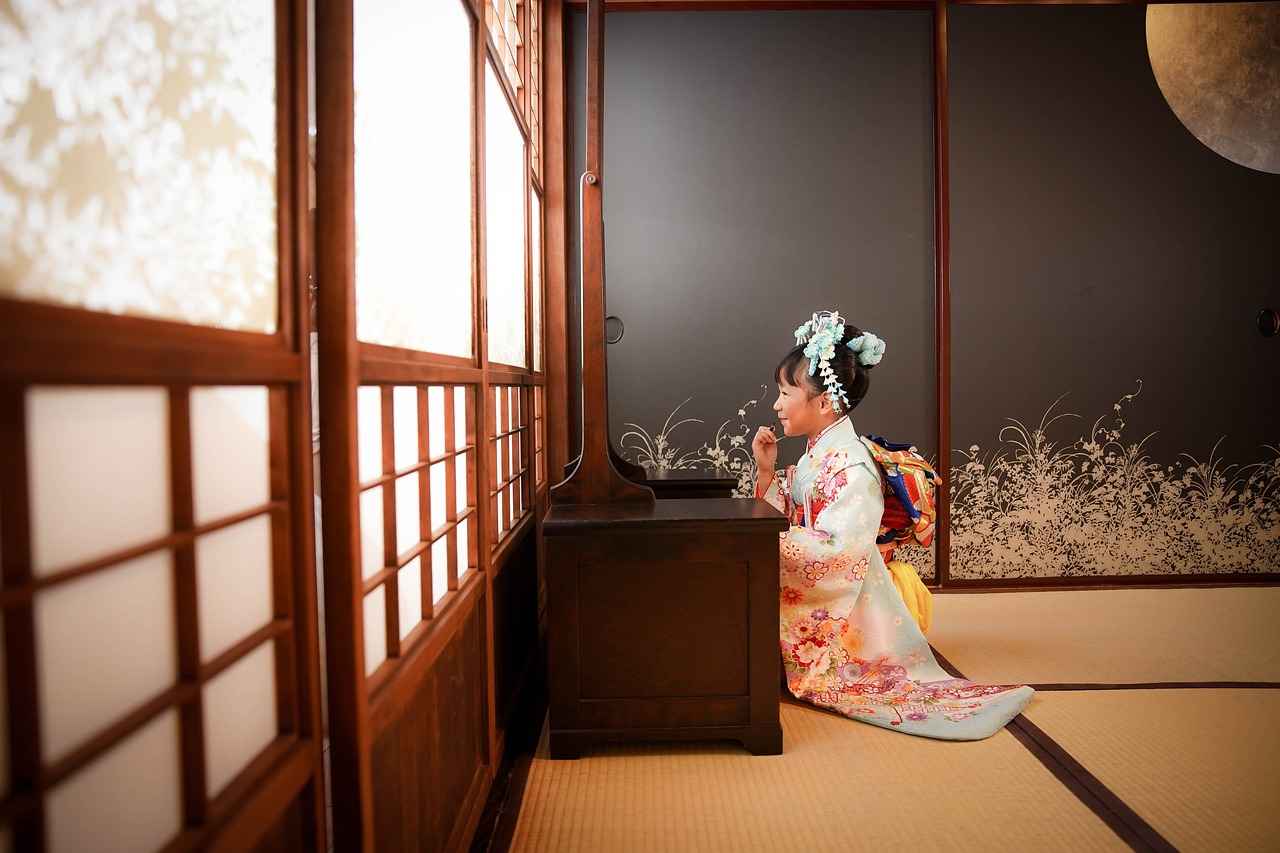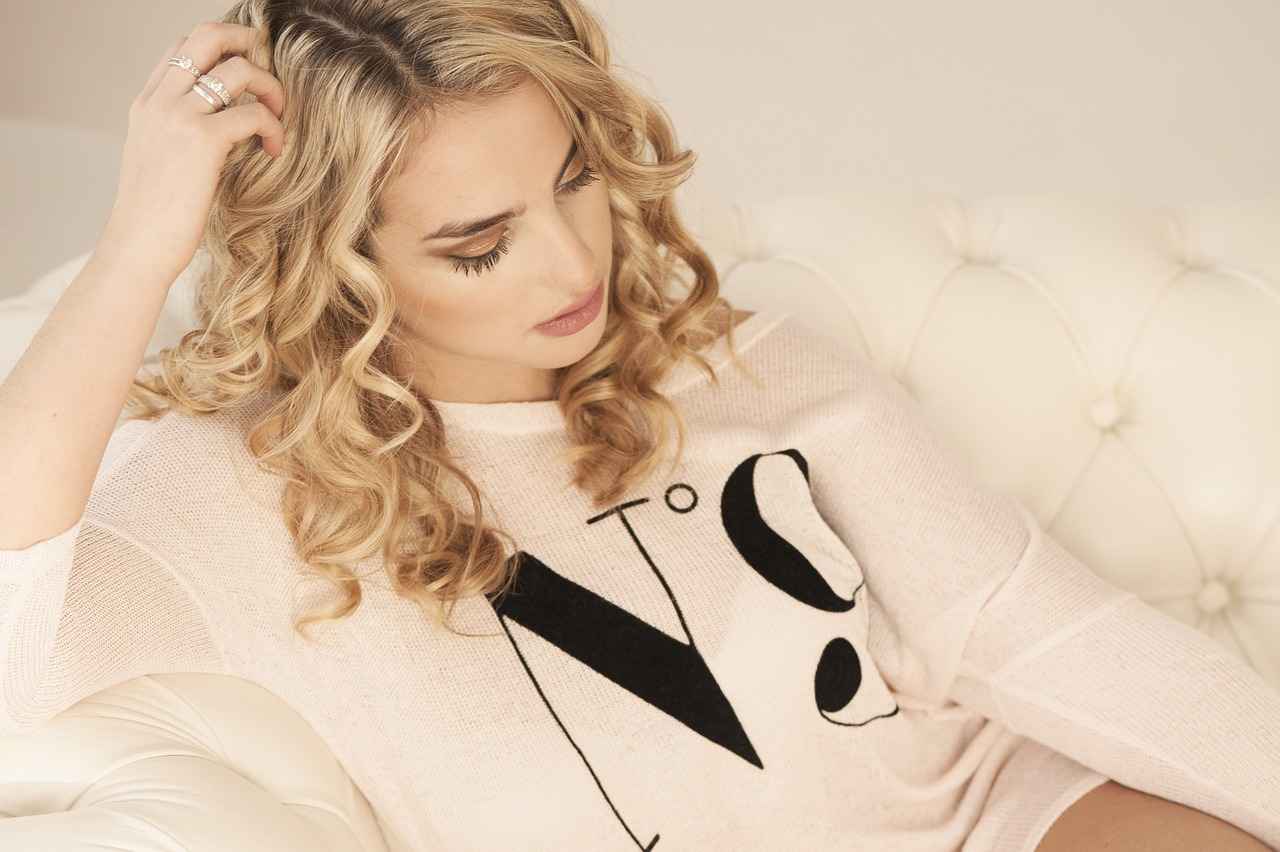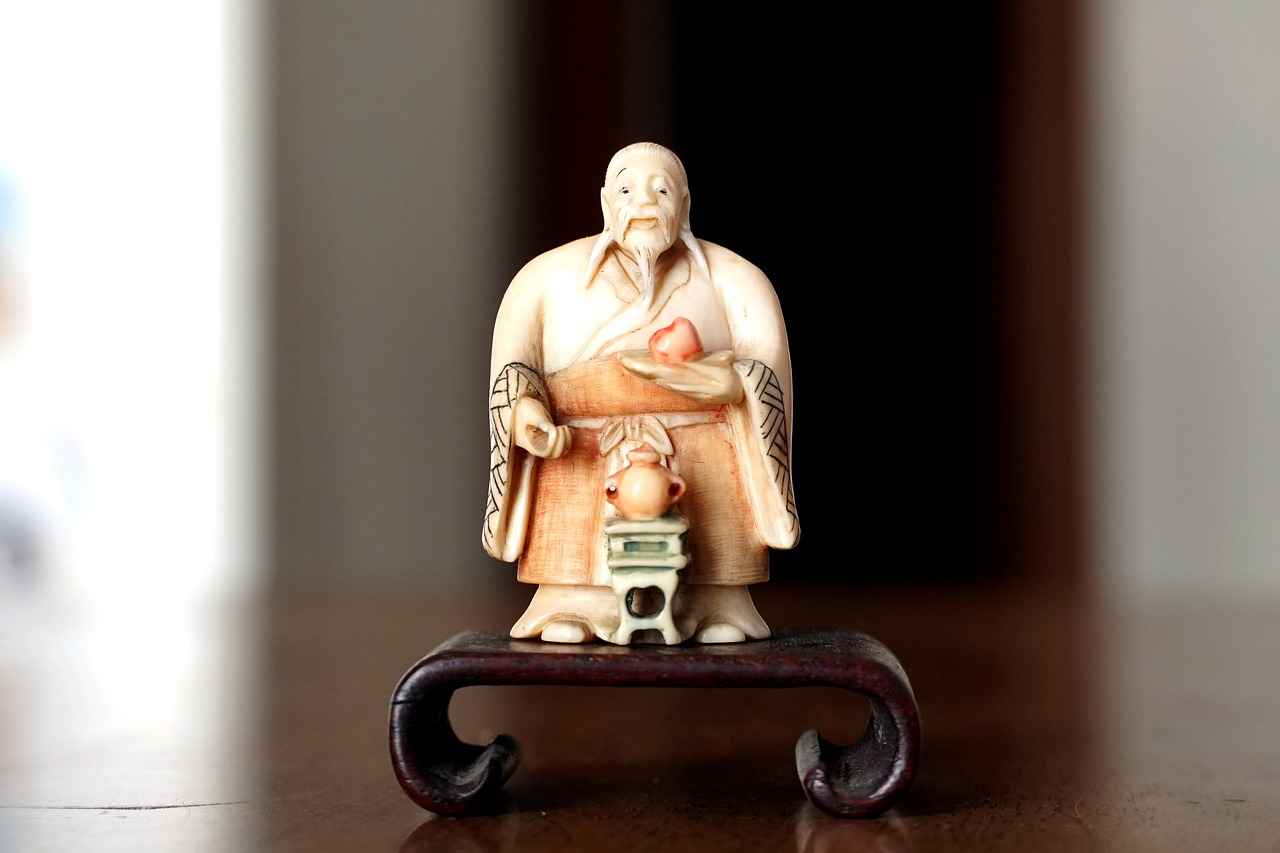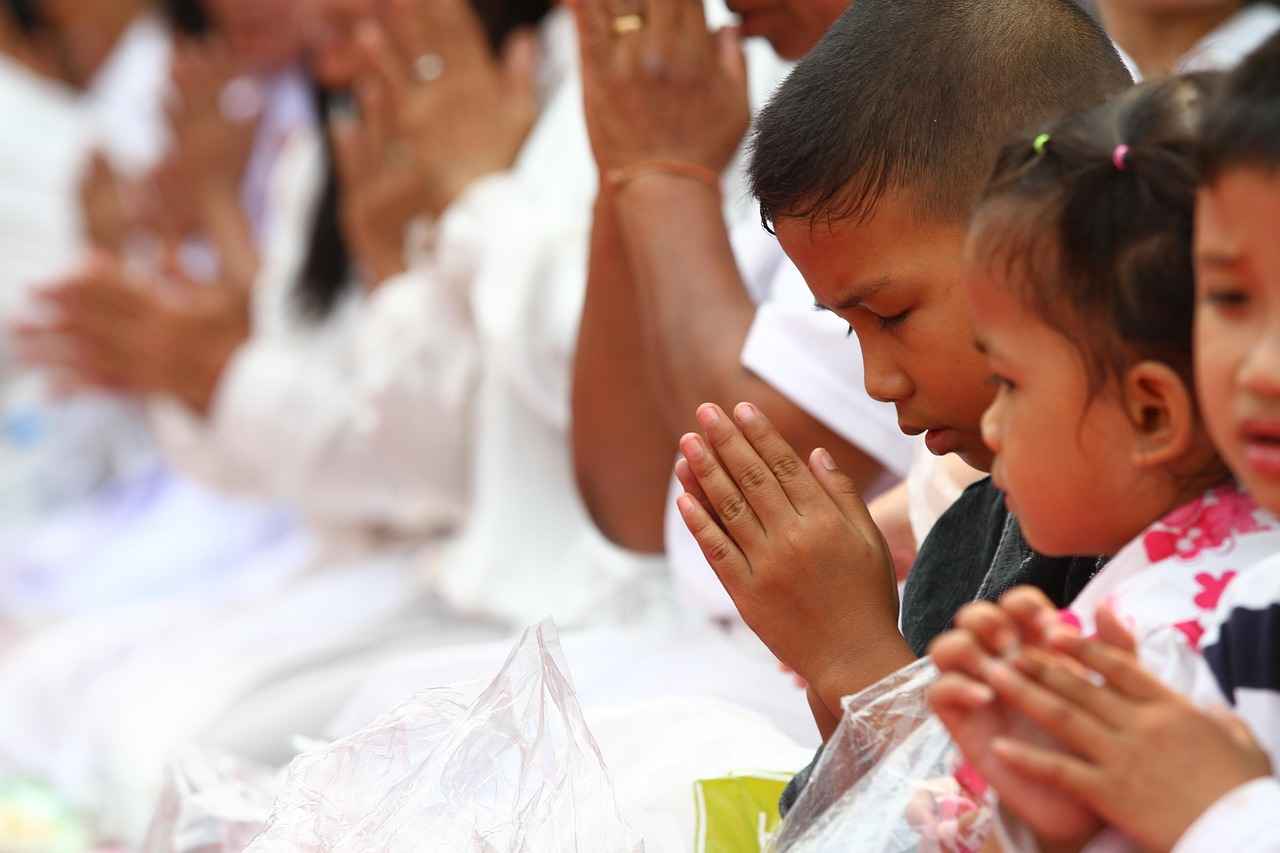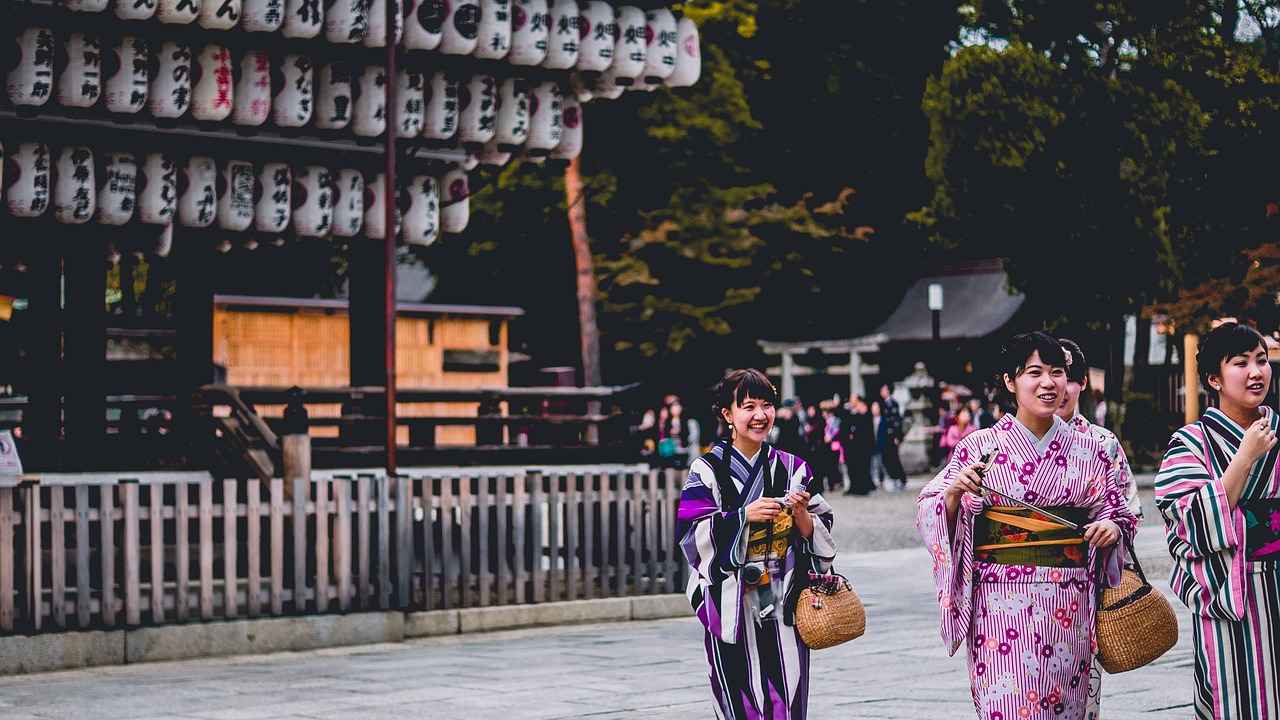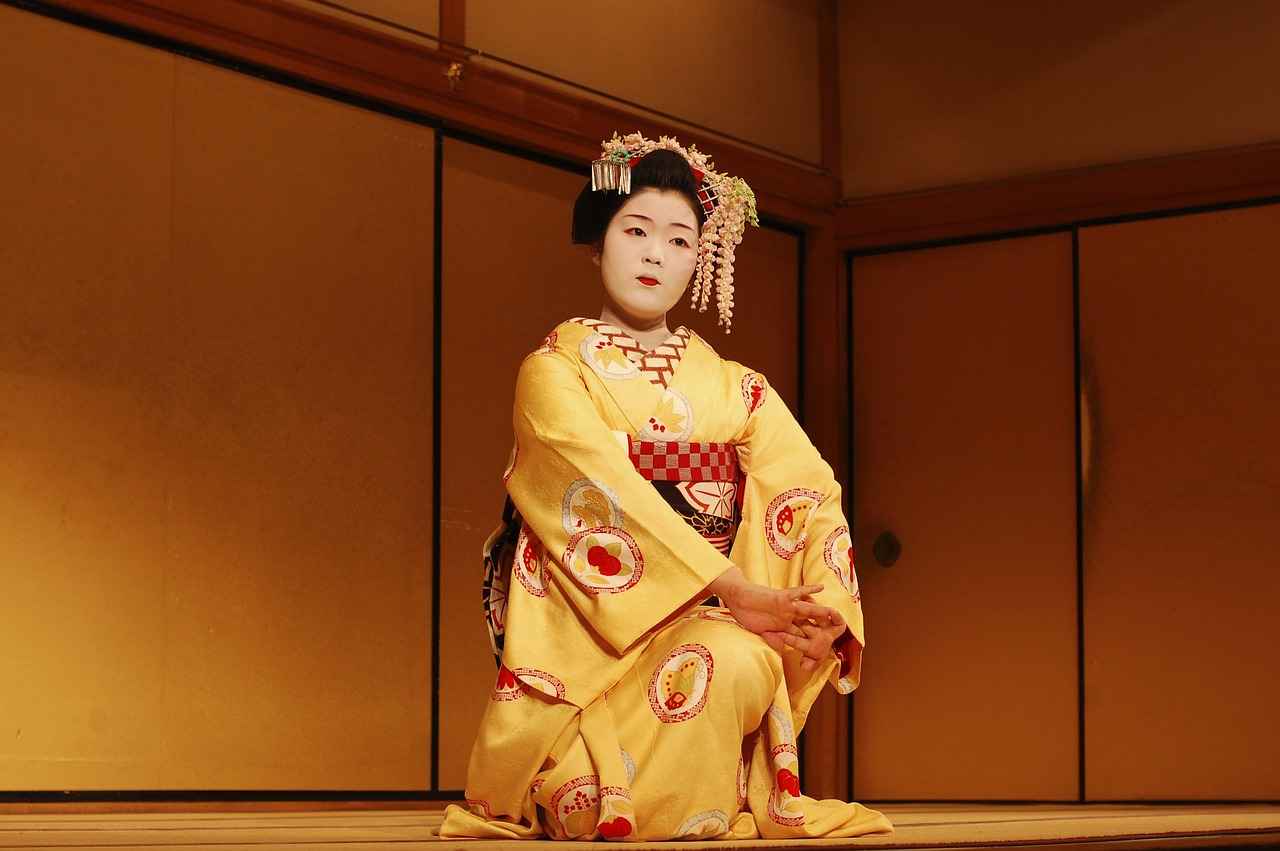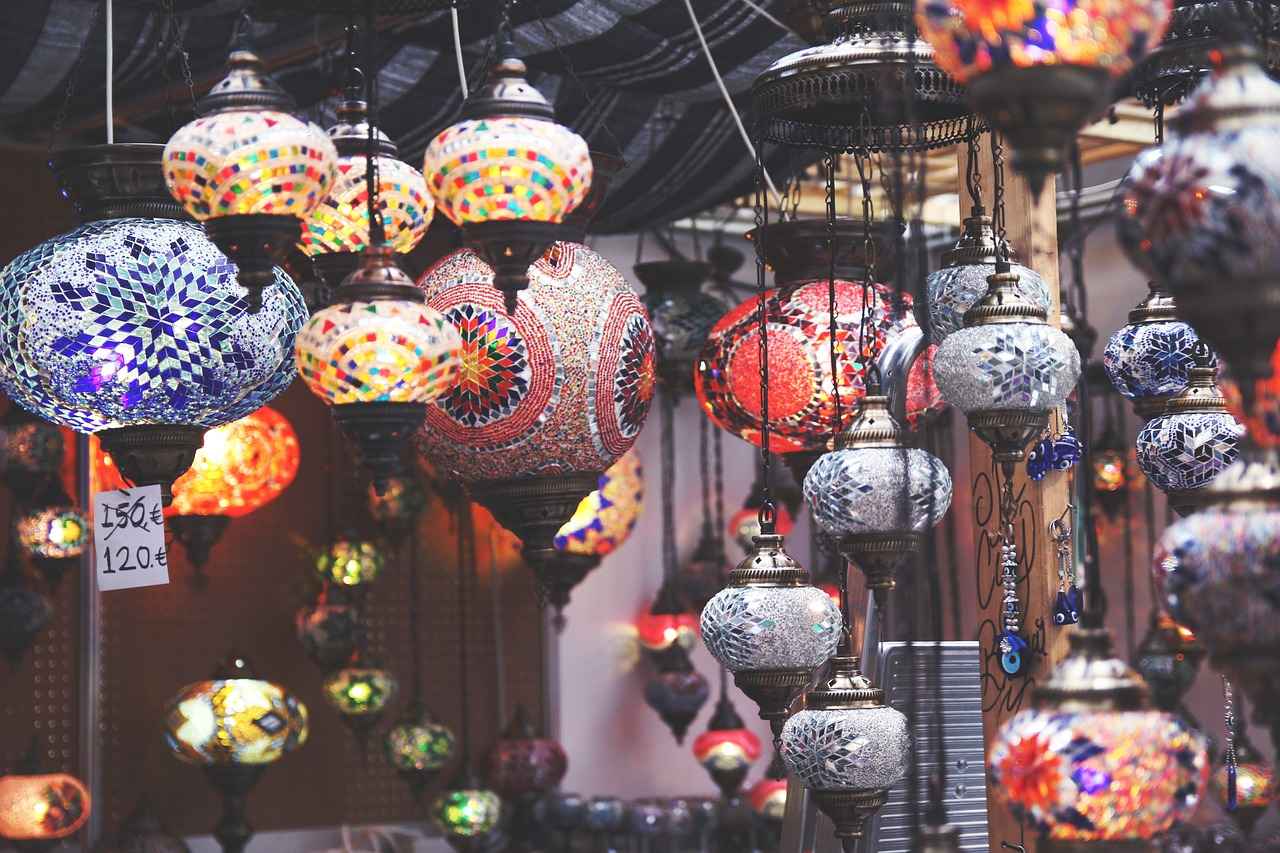As the temperature drops, it’s time to explore the latest trends in winter kimono styles. These beautiful garments not only provide warmth but also exude elegance, ensuring you remain cozy and fashionable throughout the colder months.
- Understanding the Winter Kimono: This versatile piece combines traditional Japanese design with modern functionality, making it perfect for layering during chilly weather.
- Fabric Choices for Warmth: Selecting the right fabric is essential. Look for options such as wool, cotton blends, and synthetic fibers that enhance insulation while maintaining style.
- Layering Techniques: Master the art of layering kimonos with other garments for maximum warmth and style. Consider fitted thermal tops as base layers and stylish outerwear for added warmth.
- Accessorizing: Elevate your winter kimono with accessories like scarves, belts, and footwear. Cozy scarves can provide warmth and a pop of color, while the right footwear ensures comfort and style.
- Popular Styles: From oversized kimonos that allow for easy layering to tailored designs suitable for formal occasions, there’s a winter kimono for every taste.
- Color Trends: Earthy tones and bold colors are in vogue this winter, helping you maintain a vibrant and stylish look.
- Care Tips: Proper care is crucial for longevity. Follow washing guidelines specific to fabric types and store your kimonos correctly to prevent damage.
- Where to Buy: Discover online retailers and local boutiques that offer a wide range of winter kimonos, ensuring you find the perfect addition to your wardrobe.
In conclusion, winter kimonos are a unique blend of style and warmth, making them an essential addition to your winter wardrobe. Embrace this versatile garment and express your fashion sense while staying cozy.

1. Understanding the Winter Kimono
The winter kimono is an exquisite garment that seamlessly merges traditional Japanese aesthetics with contemporary practicality. As the temperatures drop, this versatile piece becomes essential for those looking to maintain both warmth and style during the colder months. With its rich history and cultural significance, the winter kimono is not just a clothing item; it is a statement of elegance and comfort.
Traditionally, kimonos are crafted from a variety of materials, each offering unique benefits. The winter kimono, however, stands out due to its ability to provide warmth while still allowing for breathability. This makes it an ideal choice for layering, whether you’re heading out for a casual day or dressing up for a special occasion.
When considering a winter kimono, it’s important to explore the different fabric options available. Wool is a popular choice due to its natural insulating properties, while cotton blends and synthetic fibers also offer lightweight warmth and durability. Each fabric type brings its own style and functionality, ensuring that you can find the perfect match for your personal taste.
Moreover, layering techniques play a crucial role in styling a winter kimono. Pairing it with fitted base layers, such as thermal tops or long-sleeve shirts, creates a sleek silhouette that not only looks good but also maximizes warmth. Adding outerwear like jackets or coats can further enhance your outfit, providing additional insulation against the chill.
Accessories can also elevate your winter kimono ensemble. Consider adding a cozy scarf or shawl for extra warmth and a splash of color. Footwear choices, such as stylish boots or chic sneakers, can complete your look while ensuring comfort and practicality.
In conclusion, the winter kimono is a perfect blend of tradition and modern fashion, making it a must-have for anyone looking to stay warm and stylish during the winter months. Embrace this versatile garment and let it enhance your wardrobe with its unique charm.
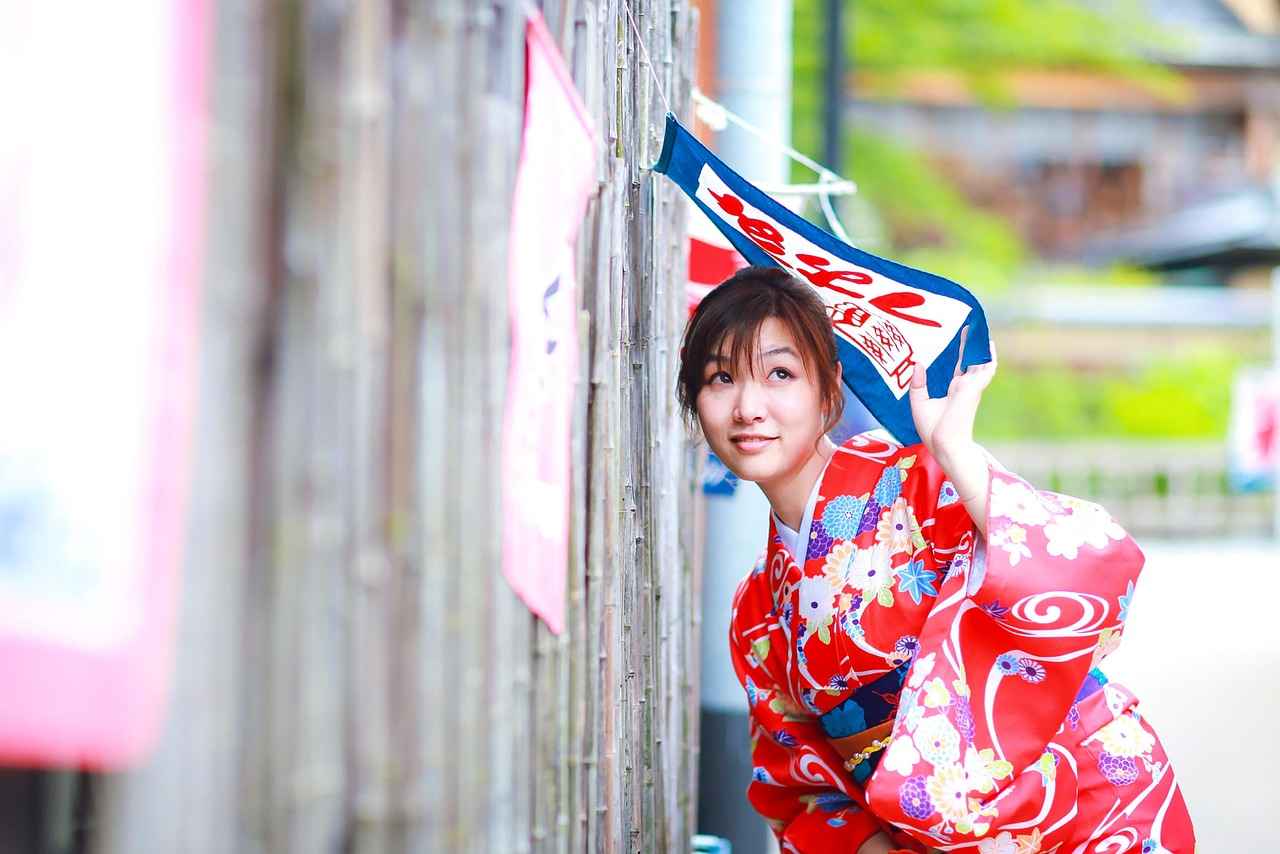
2. Fabric Choices for Warmth
Choosing the right fabric is essential for staying warm during the winter months. The fabric you select not only impacts your comfort but also your overall style. In this section, we will explore various materials that enhance insulation while ensuring you look fashionable.
When it comes to winter kimonos, fabric selection plays a pivotal role. The right materials can provide warmth, breathability, and style. Here are some top fabric choices:
- Wool: Renowned for its excellent insulation properties, wool is a natural choice for winter wear. It traps heat effectively while allowing moisture to escape, keeping you dry and warm. Wool kimonos can be both stylish and functional, making them a staple in your winter wardrobe.
- Cotton Blends: Cotton blends combine the softness of cotton with the durability of synthetic fibers. This mix offers a comfortable feel against the skin while still providing decent warmth. Look for blends that include materials like polyester for enhanced insulation.
- Synthetic Fibers: Fabrics such as polyester and nylon are lightweight yet provide excellent warmth. They are often treated to enhance their insulating properties, making them ideal for modern winter kimonos. These materials are also easy to care for and maintain their shape well.
In addition to warmth, consider the style of the fabric. Patterns, textures, and colors can elevate your winter kimono, allowing you to express your personal style while staying cozy. For example, a wool kimono with a vibrant print can be paired with neutral layers for a balanced look.
Ultimately, the right fabric choice will depend on your personal preferences and the climate you are in. Experiment with different materials to find the perfect combination of warmth and style that suits your winter wardrobe.
2.1. Wool Kimonos
Wool kimonos are an exceptional choice for those seeking warmth and style during the colder months. These garments not only provide outstanding insulation but also embody a timeless elegance that can enhance any outfit. Their unique blend of traditional Japanese design and contemporary fashion makes them a versatile addition to winter wardrobes.
When considering the benefits of wool kimonos, it’s essential to note their breathability and moisture-wicking properties. Wool fibers naturally regulate temperature, allowing wearers to stay warm without overheating. This quality is particularly advantageous in fluctuating winter temperatures. Moreover, wool is inherently durable, ensuring that your kimono remains a staple piece for years to come.
In terms of styling, wool kimonos can be paired with various outfits. For a chic layered look, consider wearing a fitted turtleneck underneath, complemented by tailored pants or a sleek skirt. This combination not only keeps you warm but also creates a sophisticated silhouette. Additionally, accessorizing with a statement belt can accentuate your waist, adding a touch of flair to your ensemble.
Another styling tip is to incorporate outerwear such as a stylish coat over your wool kimono. This not only adds an extra layer of warmth but also enhances your overall look, allowing you to express your personal style even in cold weather.
In summary, wool kimonos are not just practical for colder climates; they also offer a classic aesthetic that can be adapted to various fashion preferences. Whether you’re dressing for a casual outing or a formal event, these versatile garments can elevate your winter wardrobe while keeping you cozy and stylish.
2.1.1. Benefits of Wool
Benefits of Wool
When it comes to winter wear, wool stands out as a premier choice due to its unique properties that cater to comfort and style. The benefits of wool are numerous, making it an essential fabric for the colder months. Here are some key advantages:
- Breathability: Wool fibers are naturally breathable, allowing air to circulate while still retaining warmth. This feature helps regulate body temperature, ensuring you stay comfortable whether you’re indoors or outdoors.
- Moisture-Wicking: One of the remarkable qualities of wool is its ability to wick moisture away from the skin. This means that even if you sweat, the moisture is drawn away, keeping you dry and warm. This is particularly beneficial during physical activities in winter.
- Natural Insulation: Wool acts as a natural insulator. The crimped structure of wool fibers traps air, which provides excellent thermal insulation. This keeps you warm without the bulk of additional layers, allowing for a more streamlined look.
- Odor Resistance: Unlike many synthetic fabrics, wool has natural antimicrobial properties that resist odor. This means you can wear wool garments for longer periods without worrying about unpleasant smells, making it perfect for long winter outings.
- Durability: Wool is known for its resilience. It can withstand wear and tear better than many other fabrics, ensuring that your winter garments maintain their shape and appearance over time.
In summary, the benefits of wool make it an ideal fabric for winter wear, combining functionality with style. Whether you’re layering under a kimono or looking for standalone pieces, wool’s unique properties ensure that you stay warm, dry, and fashionable throughout the winter season.
2.1.2. Style Tips for Wool Kimonos
Style Tips for Wool Kimonos
Wool kimonos are not only a stylish addition to your winter wardrobe but also an excellent way to stay warm during the colder months. Here are some fashion-forward tips to help you style your wool kimono effectively:
- Layering with Fitted Turtlenecks: One of the best ways to wear a wool kimono is by pairing it with a fitted turtleneck. This combination provides a sleek silhouette that enhances the overall look while keeping you warm. Opt for neutral or complementary colors to create a harmonious outfit.
- Tailored Pants: To achieve a chic and polished appearance, choose tailored pants that fit well. This balance between the flowy nature of the kimono and the structured style of the pants creates an elegant look that is perfect for both casual outings and formal events.
- Accessorize Wisely: Accessories can elevate your look significantly. Consider adding a statement belt to cinch the waist of your kimono, which adds definition to your figure. Additionally, a pair of stylish ankle boots can complete your ensemble, providing both comfort and flair.
- Color Coordination: When styling your wool kimono, think about color coordination. Choose colors that either complement or contrast beautifully with your kimono. Earthy tones or bold colors can make your outfit pop, ensuring you stand out in the crowd.
- Play with Lengths: Experiment with different lengths of turtlenecks and pants. A cropped turtleneck can create a modern look, while longer pants can elongate your silhouette. Mixing these elements can add depth to your style.
By following these style tips, you can effortlessly incorporate wool kimonos into your winter wardrobe, ensuring you remain both fashionable and comfortable.
2.2. Synthetic Fabrics
Synthetic fabrics have revolutionized the fashion industry, particularly in the realm of winter kimonos. These materials are engineered to provide lightweight warmth and exceptional durability, making them a favored choice among modern consumers. Unlike traditional fabrics, synthetic options such as polyester, nylon, and acrylic offer unique benefits that cater to both comfort and style.
One of the primary advantages of synthetic fabrics is their insulating properties. They trap heat effectively, ensuring that wearers remain warm even in the coldest conditions. This characteristic is particularly important for winter kimonos, which are often worn as outer layers. Additionally, synthetic fibers are water-resistant, making them suitable for unpredictable winter weather.
Moreover, synthetic fabrics are known for their lightweight nature. This quality allows for easy layering without the bulk that can accompany heavier materials. As a result, individuals can enjoy the elegance of a kimono while maintaining freedom of movement. The breathability of these fabrics also contributes to comfort, ensuring that wearers do not overheat during indoor activities.
In terms of maintenance, synthetic fabrics are typically easy to care for. They are machine washable and dry quickly, making them a practical option for busy lifestyles. This ease of care is a significant factor for many consumers when choosing their winter garments.
Furthermore, synthetic fabrics come in a wide array of colors and patterns, allowing for versatile styling options. This variety means that winter kimonos can be both fashionable and functional, appealing to a broad audience looking to express their personal style.
In conclusion, the use of synthetic fabrics in winter kimonos represents a blend of tradition and innovation. With their lightweight warmth, durability, and ease of care, these materials are poised to remain a popular choice for those seeking to stay stylish and cozy during the colder months.

3. Layering Techniques with Kimonos
Layering Techniques with Kimonos are essential for creating stylish winter outfits that provide both warmth and flair. Mastering these techniques allows you to express your individuality while staying cozy during the colder months.
When it comes to layering kimonos, the key is to combine various textures and lengths to create a visually appealing look. Here are some effective layering techniques:
- Base Layers: Start with a fitted thermal top or a long-sleeve shirt. These pieces serve as a snug foundation, ensuring that your kimono drapes beautifully without adding bulk.
- Mid Layers: Incorporate lightweight cardigans or sweaters between your base layer and kimono. This not only adds warmth but also creates depth in your outfit.
- Outer Layers: Choose a stylish coat or jacket to wear over your kimono. Opt for tailored outerwear for a polished look, or go for oversized options for a more relaxed vibe.
The choice of colors and patterns in your layers can also enhance your ensemble. Consider pairing a solid-colored kimono with patterned base layers or vice versa. This contrast can make your outfit more dynamic and engaging.
Additionally, don’t forget about accessories. A cozy scarf can provide extra warmth and a pop of color, while a stylish belt can cinch the waist of your kimono, creating a flattering silhouette. Footwear is equally important; opt for insulated boots or chic ankle boots that complement your layered look.
In conclusion, layering kimonos effectively is about balancing warmth and style. By selecting the right base, mid, and outer layers, along with thoughtful accessories, you can create versatile winter outfits that keep you cozy and fashionable.
3.1. Base Layers
Choosing the right base layer is crucial for achieving both comfort and style when wearing a kimono during the winter months. The base layer serves as the foundation of your outfit, providing essential insulation while ensuring that your silhouette remains sleek and flattering. Here are some key considerations when selecting your base layer:
- Fitted Thermal Tops: Opt for fitted thermal tops that hug your body without adding bulk. These tops are designed to trap heat while allowing for breathability, making them an excellent choice for layering under your kimono.
- Long-Sleeve Shirts: Long-sleeve shirts made from moisture-wicking fabrics can keep you dry and warm. Look for options with a bit of stretch to ensure ease of movement.
- Layering Techniques: When layering, consider the length of your base layer. A longer top can provide additional coverage and prevent any gaps between your clothing layers.
Additionally, color coordination plays a significant role in achieving a harmonious look. Neutral tones such as black, white, or beige can seamlessly blend with various kimono patterns and colors. On the other hand, if you want to make a statement, choose vibrant colors that complement the kimono’s design.
For added warmth, consider base layers with built-in insulation or thermal properties. These options are particularly beneficial in frigid temperatures, ensuring you stay cozy without compromising on style.
In summary, the right base layer is not just about warmth; it’s about creating a polished, layered look that enhances your kimono ensemble. By choosing fitted thermal tops or long-sleeve shirts, you can enjoy a stylish and comfortable winter experience.
3.2. Outerwear Options
When it comes to styling your kimono for winter, incorporating outerwear such as jackets or coats can significantly enhance both warmth and aesthetic appeal. This layering technique not only provides additional insulation against the cold but also allows for a creative expression of personal style.
Choosing the right outerwear can transform your kimono look. Here are some popular options:
- Long Coats: A long, tailored coat can add sophistication to your kimono ensemble. Opt for classic colors like black or navy to maintain a timeless look.
- Puffer Jackets: For a more casual and sporty vibe, puffer jackets offer excellent insulation and can be paired with a flowing kimono for a chic contrast.
- Denim Jackets: A fitted denim jacket is a versatile choice that adds a modern twist to the traditional kimono. This combination is perfect for a casual day out.
When layering, consider the following tips:
- Balance Proportions: If your kimono is voluminous, opt for a more fitted outerwear piece to create a balanced silhouette.
- Color Coordination: Ensure that the colors of your outerwear complement your kimono. Neutral shades often work well, but don’t shy away from bold contrasts for a statement look.
- Accessorize Wisely: Adding accessories such as a stylish belt or a statement scarf can elevate your outfit further, creating a cohesive and fashionable appearance.
In conclusion, incorporating outerwear over your kimono is an effective way to stay warm while enhancing your overall look. The right combination of fabrics, colors, and styles can create a unique winter outfit that is both practical and stylish.
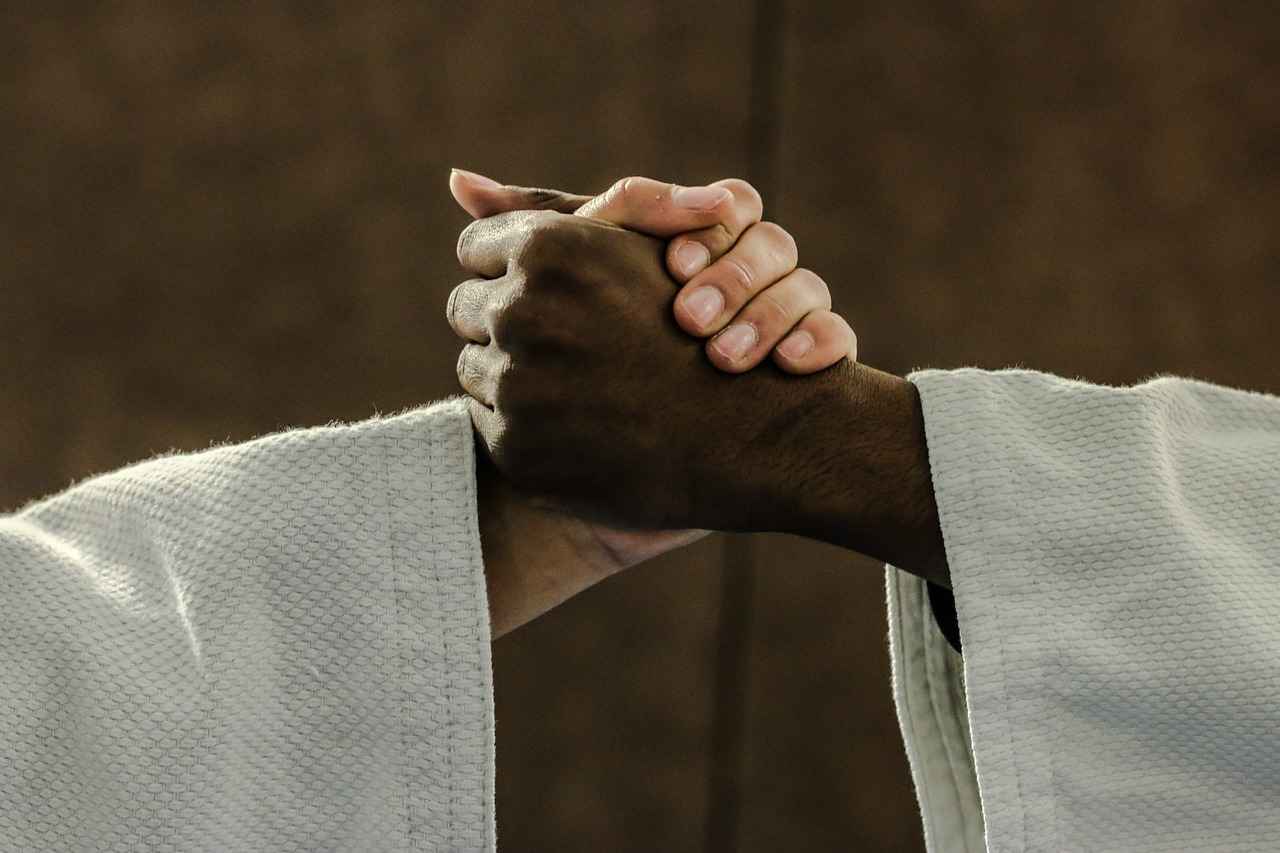
4. Accessorizing Your Winter Kimono
Accessorizing Your Winter Kimono is an essential aspect of achieving a stylish and functional look during the colder months. The right accessories can transform your kimono outfit, adding layers of warmth and visual interest. Here, we will explore various accessories that can enhance your winter kimono style.
Adding a cozy scarf or shawl can not only provide additional warmth but also introduce a splash of color or texture to your ensemble. Look for scarves made from soft materials like cashmere or wool that drape beautifully and keep you snug. Consider patterns such as plaids or florals to add dimension to your outfit.
A belt can be a game-changer when it comes to styling your kimono. By cinching the waist, it creates a more defined silhouette, which is especially flattering when wearing oversized kimonos. Opt for wide fabric belts for a bohemian vibe or sleek leather belts for a more polished look. This small addition can significantly change the overall feel of your outfit.
Choosing the right footwear is crucial for both comfort and style. Winter-ready options such as ankle boots or knee-high boots not only keep your feet warm but also enhance your kimono look. For a more casual approach, consider stylish sneakers that provide comfort while maintaining a trendy aesthetic.
Don’t forget about jewelry! Statement necklaces or layered bracelets can add a touch of elegance and personal flair to your winter kimono. Choose pieces that complement the colors and patterns of your kimono, ensuring a cohesive look.
In conclusion, accessorizing your winter kimono is about finding the right balance between warmth and style. By thoughtfully selecting scarves, belts, footwear, and jewelry, you can elevate your kimono outfits and express your unique fashion sense throughout the winter season.
4.1. Scarves and Shawls
Scarves and shawls are not just practical accessories; they are also a fantastic way to elevate your winter kimono ensemble. As the temperatures drop, incorporating these cozy pieces can provide essential warmth while adding a vibrant splash of color to your outfit. In this section, we will explore the various ways to style scarves and shawls with your kimono, ensuring you remain both fashionable and comfortable during the chilly months.
When choosing a scarf or shawl to pair with your kimono, consider the following:
- Material: Opt for fabrics like wool or cashmere for maximum warmth. These materials are not only insulating but also soft against the skin, making them perfect for layering.
- Color and Pattern: Select colors that complement your kimono. Bold patterns can add a fun element to your look, while solid colors can create a more sophisticated vibe.
- Size and Shape: A larger shawl can be draped over your shoulders for a dramatic effect, while a narrower scarf can be wrapped around the neck for a snug fit.
To enhance your kimono outfit, try these styling tips:
- Layering Techniques: Drape a shawl over your shoulders for an elegant touch. This layering not only adds warmth but also creates a chic silhouette.
- Knotted Styles: For a more casual look, tie a scarf in a loose knot. This adds a relaxed vibe while keeping you cozy.
- Contrast and Complement: Use a scarf with contrasting colors to make your kimono stand out, or choose a complementary shade to create a harmonious look.
In conclusion, scarves and shawls are essential accessories when styling a winter kimono. They provide warmth, versatility, and a chance to express your personal style. By choosing the right materials, colors, and styles, you can enhance your ensemble, making it both functional and fashionable.
4.2. Footwear Choices
Choosing the right footwear is a crucial aspect of any winter wardrobe, especially when it comes to pairing with stylish winter kimonos. The right shoes not only enhance your overall look but also provide the necessary comfort and warmth during the colder months. Here are some options to consider:
- Stylish Boots: Opt for knee-high or ankle boots that offer insulation and support. Look for options made with waterproof materials to keep your feet dry and warm. Boots with a slight heel can add elegance to your outfit, making them perfect for both casual and formal occasions.
- Chic Sneakers: For a more relaxed vibe, stylish sneakers are a great choice. Choose designs that feature warm linings and cushioned soles for maximum comfort. Sneakers in bold colors or unique patterns can add a fun element to your winter kimono ensemble.
- Faux Fur Lined Footwear: Footwear lined with faux fur not only provides warmth but also adds a touch of luxury to your look. These types of shoes can be found in various styles, including boots and slip-ons, making them versatile for any outfit.
- Winter Hiking Shoes: If you’re planning to spend time outdoors, consider winter hiking shoes. These are designed to provide traction on slippery surfaces while keeping your feet warm. Look for waterproof options with good insulation.
When selecting footwear, keep in mind the balance between comfort and style. A well-chosen pair of shoes can elevate your winter kimono look, allowing you to express your personal style while staying cozy. Don’t forget to consider the color and material of your footwear to ensure it complements your overall outfit.
In conclusion, whether you opt for boots, sneakers, or any other stylish option, the right footwear is essential in completing your winter kimono look. Make thoughtful choices that prioritize both comfort and aesthetics to navigate the chilly months with confidence.

5. Popular Winter Kimono Styles
Popular Winter Kimono Styles have become a significant trend in contemporary fashion, merging traditional aesthetics with modern functionality. As winter approaches, it’s essential to explore various styles that not only keep you warm but also enhance your personal style. Here, we will delve into the most popular winter kimono styles, ensuring you find the perfect match for your wardrobe.
- 1. Oversized Kimonos: Oversized kimonos are synonymous with comfort and versatility. Their loose fit allows for easy layering, making them ideal for colder days. Pair them with fitted jeans or leggings for a balanced silhouette.
- 2. Tailored Kimonos: For those who prefer a more structured look, tailored kimonos are an excellent choice. These kimonos feature defined shapes and can be dressed up for formal occasions or styled down for everyday wear. Consider pairing them with tailored trousers or a chic skirt.
- 3. Printed Kimonos: Adding a printed kimono to your winter wardrobe can bring a splash of personality to your outfit. From floral patterns to geometric designs, printed kimonos can be easily layered over neutral-toned outfits.
- 4. Longline Kimonos: Longline kimonos provide extra coverage and warmth, making them perfect for chilly days. Their elongated silhouette can create an elegant look when worn over a fitted dress or a turtleneck and jeans.
- 5. Belted Kimonos: Belted kimonos offer a unique way to define your waist while maintaining a relaxed vibe. This style is perfect for layering over a simple top and can be accessorized with statement jewelry for a polished finish.
In conclusion, exploring these popular winter kimono styles can help you stay warm while expressing your unique fashion sense. Whether you prefer the relaxed fit of oversized designs or the sophistication of tailored kimonos, there’s a style out there for everyone. Embrace the winter season with these versatile garments and elevate your wardrobe.
5.1. Oversized Kimonos
Oversized kimonos have become a staple in contemporary fashion, known for their relaxed fit and exceptional comfort. These garments are not just about style; they embody a sense of freedom and ease, making them ideal for various occasions. The oversized silhouette allows for effortless layering, enabling wearers to stay warm while maintaining a chic appearance.
One of the key advantages of oversized kimonos is their versatility. They can be styled in numerous ways, making them suitable for both casual outings and more formal events. Pairing an oversized kimono with fitted jeans or leggings creates a balanced look that flatters various body types. Additionally, layering with a fitted turtleneck or a simple tee can provide extra warmth during colder months.
When it comes to fabric choices, oversized kimonos can be found in a variety of materials, from lightweight cotton to thicker wool blends. This diversity in fabrics ensures that there is a perfect kimono for every season. For instance, opting for a wool oversized kimono during winter offers warmth without compromising style, while a lightweight cotton version is perfect for spring and summer.
Moreover, the design elements of oversized kimonos often include unique patterns and colors that can make a bold statement. Earthy tones and vibrant prints are particularly popular, allowing wearers to express their individuality while embracing the comfort of this garment.
In conclusion, oversized kimonos are more than just a fashion trend; they are a reflection of personal style and comfort. Their ability to be layered easily, coupled with a variety of fabric options, makes them a must-have in any wardrobe. Whether you’re dressing up for a special occasion or keeping it casual, an oversized kimono is the perfect addition to elevate your look.
5.2. Tailored Kimonos
Tailored kimonos represent a sophisticated evolution of traditional Japanese attire, merging cultural heritage with contemporary fashion sensibilities. These garments are designed to offer a more structured silhouette, making them an excellent choice for formal occasions or a polished everyday look. The tailored fit enhances the wearer’s figure, providing an elegant appearance that can easily transition from day to night.
When selecting a tailored kimono, consider the fabric and color. High-quality materials such as silk or fine cotton are ideal for maintaining the integrity of the tailored shape while ensuring comfort. Darker shades or muted tones often lend a more formal vibe, while brighter colors can add a playful touch to your outfit.
To style a tailored kimono effectively, pairing it with fitted clothing is essential. A sleek turtleneck or a well-fitted blouse can create a harmonious balance, allowing the kimono to stand out without overwhelming the overall look. Tailored trousers or a pencil skirt can further enhance the polished aesthetic, making it suitable for business meetings or elegant gatherings.
Accessorizing is another critical component of styling tailored kimonos. Consider adding a statement belt to cinch the waist, creating a more defined silhouette. Elegant jewelry, such as delicate earrings or a simple necklace, can complete the outfit without overpowering the kimono’s intricate design.
In conclusion, tailored kimonos are a versatile addition to any wardrobe, offering a unique blend of tradition and modernity. Whether dressing for a formal event or aiming for a sophisticated everyday look, these garments provide endless styling possibilities. Embrace the elegance of tailored kimonos and elevate your fashion game this winter.

6. Color Trends for Winter Kimonos
Color trends play a crucial role in defining winter kimono styles, ensuring that you not only stay warm but also look fashionable during the colder months. As winter approaches, it’s essential to embrace colors that reflect the season while adding a touch of vibrancy to your wardrobe. Below, we explore the trending colors for winter kimonos that will keep your style fresh and vibrant.
- 1. Earthy Tones
Earthy tones such as browns, greens, and rust are gaining popularity this winter. These colors evoke a sense of warmth and connection to nature, making them perfect for the season. They can be easily paired with neutral accessories and provide a cozy vibe.
- 2. Jewel Tones
Rich jewel tones like emerald green, sapphire blue, and deep purple are making a bold statement this winter. These colors not only add a touch of luxury to your outfit but also enhance your overall winter look, making you stand out in the crowd.
- 3. Pastel Shades
Contrary to traditional winter palettes, pastel shades such as soft pinks, lavenders, and light blues have emerged as a refreshing trend. These colors can brighten up dreary winter days and offer a unique twist to the typical winter wardrobe.
- 4. Bold Colors
Incorporating bold colors like crimson, royal blue, and mustard yellow can create a striking contrast against the muted winter backdrop. These vibrant hues not only elevate your outfit but also add a sense of fun and excitement to your style.
- 5. Monochromatic Looks
Monochromatic outfits in shades of grey or black are classic winter choices. They provide a sleek and sophisticated look that is both timeless and elegant. You can play with different textures and fabrics to add depth to a monochromatic ensemble.
As you update your winter kimono collection, consider these trending colors to ensure your wardrobe remains stylish and relevant. By incorporating a mix of earthy tones, jewel tones, pastels, bold colors, and monochromatic looks, you can create a versatile and fashionable winter style.
6.1. Earthy Tones
When it comes to winter fashion, earthy tones such as browns, greens, and rust are not only trendy but also provide a warm and inviting palette that resonates with the seasonal atmosphere. These colors evoke the beauty of nature, creating a harmonious balance between style and comfort.
Incorporating earthy tones into your winter wardrobe can enhance your overall look while ensuring you stay cozy. Here are some insights on how to effectively use these colors:
- Browns: This versatile color can range from light tan to deep chocolate. It pairs beautifully with other neutral shades and can be worn in various fabrics, such as wool or cashmere, to add depth to your outfit.
- Greens: From olive to forest green, these shades can bring a touch of nature to your ensemble. Consider layering a green kimono over a neutral base to create a striking yet balanced look.
- Rust: This vibrant hue adds warmth and richness to winter outfits. Rust-colored accessories, like scarves or hats, can be perfect for making a statement without overwhelming your look.
To fully embrace these earthy tones, consider the following style tips:
1. Start with a neutral base (e.g., black or white).2. Layer with earthy-toned kimonos or cardigans.3. Accessorize with complementary colors for a cohesive look.
In conclusion, earthy tones are a fantastic choice for winter fashion, offering a blend of warmth and style that reflects the beauty of the season. By incorporating these colors into your wardrobe, you can create outfits that are not only fashionable but also comfortable and inviting.
6.2. Bold Colors
Bold Colors in winter fashion can transform your look from ordinary to extraordinary. By incorporating vibrant hues such as deep reds or royal blues, you can create a striking statement that not only brightens up your wardrobe but also lifts your spirits during the colder months.
Winter tends to favor muted tones, but embracing bold colors can set you apart from the crowd. Here are some ways to effectively incorporate these vibrant shades into your winter kimono styles:
- Layering with Neutrals: Pair your bold-colored kimono with neutral base layers. This allows the vibrant color to stand out while maintaining a balanced look.
- Accessorizing: Use accessories like scarves or belts in complementary colors to enhance the overall outfit. A golden belt can beautifully contrast with a deep red kimono, adding a touch of elegance.
- Footwear Choices: Opt for boots or shoes in a neutral shade or even a matching bold color to tie the outfit together. For instance, navy blue boots can perfectly complement a royal blue kimono.
- Mixing Patterns: Don’t shy away from mixing patterns. A bold floral print can add depth to a solid-colored kimono, making your outfit more dynamic and visually appealing.
In addition to aesthetics, bold colors can evoke emotions and enhance your mood. Wearing a vibrant kimono can instill confidence and energy, making it a perfect choice for social gatherings or casual outings. Remember, fashion is not just about looking good; it’s about feeling good too!
In conclusion, incorporating bold colors like deep reds and royal blues into your winter wardrobe is a fantastic way to express your personality and stay stylish. Don’t hesitate to experiment with different combinations and find what works best for you!

7. Caring for Your Winter Kimono
Caring for your winter kimono is essential to maintain its quality and longevity. Proper care not only preserves the garment’s appearance but also ensures that it remains a cherished part of your wardrobe for years to come. Below, we explore the best practices for washing and storing your winter kimonos.
When it comes to washing your winter kimono, following the manufacturer’s instructions is crucial. Here are some general tips:
- Check the Label: Always read the care label for specific washing instructions.
- Hand Wash or Machine Wash: If your kimono is made from delicate fabric, hand washing is recommended. For machine washing, use a gentle cycle.
- Use Mild Detergent: Opt for a mild detergent that is suitable for delicate fabrics to prevent damage.
- Cold Water: Wash your kimono in cold water to prevent shrinkage and fading.
- Avoid Bleach: Never use bleach, as it can ruin the fabric and colors.
After washing, proper drying techniques are essential:
- Air Dry: Lay your kimono flat on a clean, dry towel to absorb excess water, then hang it to air dry away from direct sunlight.
- Avoid Tumble Drying: Tumble drying can cause shrinkage and damage to delicate fabrics.
Storing your winter kimono correctly is just as important as washing it:
- Hanging vs. Folding: If possible, hang your kimono on a padded hanger to maintain its shape. If you must fold it, use tissue paper to prevent creasing.
- Keep it in a Cool, Dry Place: Avoid damp areas to prevent mold and mildew.
- Use Garment Bags: For long-term storage, consider using breathable garment bags to protect your kimono from dust and pests.
By following these care guidelines, you can ensure that your winter kimono remains in excellent condition, allowing you to enjoy its beauty and warmth for many seasons to come.
7.1. Washing Guidelines
Washing Guidelines for Your Winter Kimono
Taking care of your winter kimono is essential for maintaining its quality and ensuring it lasts for many seasons. Each fabric type has unique washing requirements that must be followed to preserve the garment’s appearance and longevity.
1. Read the Care Label
Before washing, always check the care label attached to your kimono. This label provides specific instructions regarding washing temperature, drying methods, and whether the fabric is suitable for machine washing or needs to be hand-washed.
2. Sorting by Fabric Type
- Wool Kimonos: These should ideally be washed by hand in cold water using a gentle detergent. Avoid wringing or twisting the fabric to prevent damage.
- Cotton Blends: Machine washing on a gentle cycle with cold water is usually safe. However, always verify the specific instructions on the care label.
- Synthetic Fabrics: Most synthetic kimonos can be washed in a washing machine on a delicate cycle. Use a mild detergent to maintain the fabric’s integrity.
3. Drying Techniques
After washing, how you dry your kimono is just as important:
- Air Drying: Lay your kimono flat on a clean, dry towel to absorb excess moisture. Reshape it gently and allow it to air dry away from direct sunlight to avoid fading.
- Machine Drying: If the care label permits, use a low heat setting. However, air drying is generally recommended to prevent shrinkage.
4. Ironing and Steaming
If your kimono is wrinkled after washing, use a steam iron on a low setting or a handheld steamer. Always place a cloth between the iron and the fabric to avoid direct contact and potential damage.
By following these washing guidelines tailored to your kimono’s fabric type, you can ensure that your winter kimono remains in excellent condition, ready to keep you warm and stylish throughout the colder months.
7.2. Storage Tips
Storing your winter kimono correctly is essential to maintain its beauty and longevity. Proper storage techniques can help prevent wrinkles, damage, and ensure that your kimono remains in pristine condition during the off-season. Here are some effective tips for storing your winter kimono:
- Choose the Right Storage Location: Store your kimono in a cool, dry place away from direct sunlight. Excessive heat and humidity can cause fabric deterioration.
- Hanging vs. Folding: If you choose to hang your kimono, use a padded hanger to maintain its shape. Ensure that the hanger is wide enough to avoid creasing the shoulders. On the other hand, if you prefer to fold it, lay it flat in a breathable cotton bag to prevent dust accumulation.
- Use Acid-Free Tissue Paper: When folding your kimono, place acid-free tissue paper between the layers to prevent creases and protect delicate fabrics.
- Avoid Plastic Covers: While it may be tempting to use plastic covers, they can trap moisture and lead to mildew. Instead, opt for breathable fabric covers.
- Regular Checks: Periodically check on your stored kimono. Look for any signs of pests or damage, and air it out if necessary to prevent mustiness.
By following these storage tips, you can ensure that your winter kimono remains beautiful and ready to wear when the season changes. Proper care and attention to detail can significantly extend the life of your garment, allowing you to enjoy its elegance for years to come.
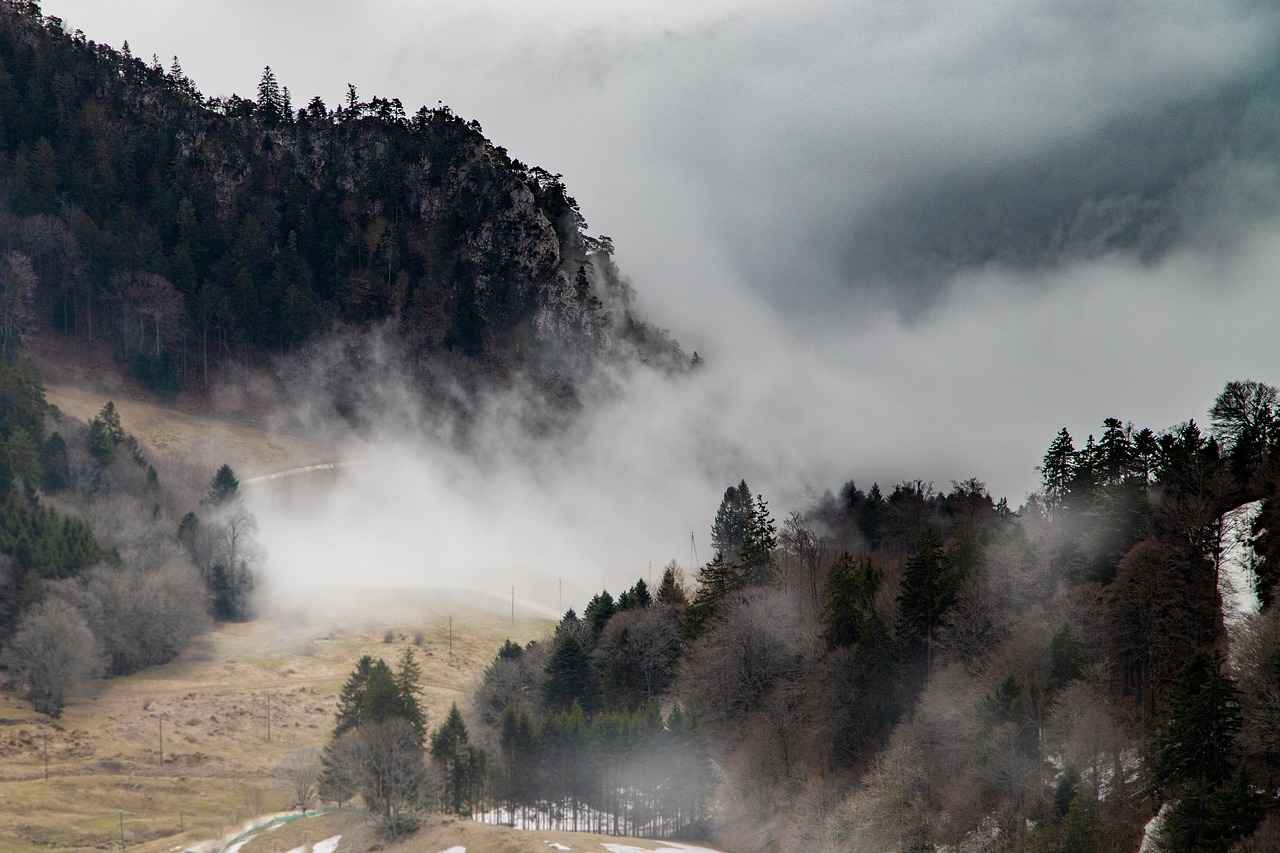
8. Where to Buy Winter Kimonos
Finding the perfect winter kimono can be an exciting journey, whether you prefer shopping online or exploring local boutiques. This guide will help you navigate the best places to purchase winter kimonos, ensuring you discover a piece that suits your style and needs.
- Online Retailers
- Online shopping offers convenience and a vast selection. Websites like Example.com and AnotherExample.com feature a variety of winter kimonos in different fabrics, styles, and sizes. Many of these sites provide user reviews, which can help you make informed decisions.
- Look for retailers that offer detailed sizing guides and return policies to ensure you find the right fit without hassle.
- Local Boutiques
- Shopping at local boutiques can provide a unique experience. You can find one-of-a-kind pieces that reflect your personal style while supporting small businesses.
- Many boutiques curate their collections with care, often featuring handmade or locally sourced kimonos that you won’t find in larger stores.
- Department Stores
- Don’t overlook department stores, which often carry a selection of winter kimonos. Stores like Nordstrom and Macy’s typically offer a range of styles, from casual to more formal options.
- These stores frequently have seasonal sales, making it a great opportunity to snag a stylish kimono at a discounted price.
- Thrift Shops and Vintage Stores
- If you’re looking for something truly unique, consider visiting thrift shops and vintage stores. You may discover vintage kimonos that add character to your wardrobe.
- Shopping second-hand is also an eco-friendly choice, allowing you to find beautiful garments while reducing fashion waste.
In conclusion, whether you choose to shop online or explore local boutiques, there are numerous options available to find the perfect winter kimono. Embrace the variety and enjoy the process of discovering a piece that enhances your winter wardrobe.
8.1. Online Retailers
Online Retailers for Winter Kimonos
In the digital age, shopping for winter kimonos has never been easier, thanks to a variety of online platforms that cater to diverse tastes and preferences. These retailers not only offer an extensive range of styles but also provide valuable insights through user reviews and detailed sizing guides.
Here are some of the most popular online retailers where you can find winter kimonos:
- Amazon – A giant in e-commerce, Amazon features a vast selection of winter kimonos from various brands. User reviews can help you gauge the quality and fit before making a purchase.
- Etsy – For those seeking unique, handmade options, Etsy is the perfect platform. Many artisans offer custom designs, allowing for a personal touch in your winter wardrobe.
- ASOS – Known for its trendy fashion, ASOS provides a range of stylish winter kimonos that cater to younger audiences. Their detailed sizing charts ensure a good fit.
- Nordstrom – For a more upscale shopping experience, Nordstrom offers high-quality winter kimonos from renowned brands, often accompanied by expert styling advice.
- Zalando – This European retailer offers a wide variety of winter kimonos, with a focus on both style and comfort. Their user-friendly interface makes it easy to navigate through options.
When shopping online, it’s essential to check return policies and shipping options to ensure a smooth shopping experience. Many retailers provide free returns, which can be a great advantage if the fit isn’t quite right.
In conclusion, exploring online retailers for winter kimonos opens up a world of possibilities. With user reviews and sizing guides at your fingertips, you can make informed decisions that suit your style and needs.
8.2. Local Boutiques
Exploring local boutiques can transform your shopping experience into something truly special. Unlike large retail chains, these boutiques offer a personalized touch that makes every visit unique. When you step into a local boutique, you are not just browsing through racks of clothing; you are engaging with a carefully curated selection of items that reflect the distinct style and personality of the shop owner.
One of the most significant advantages of shopping at local boutiques is the opportunity to discover one-of-a-kind pieces. Many boutiques feature handmade or limited-edition items that you won’t find anywhere else. This exclusivity allows you to express your individual style and stand out from the crowd. Additionally, local boutiques often showcase the work of local artisans and designers, giving you a chance to support your community while enhancing your wardrobe.
Moreover, shopping at these boutiques contributes to the local economy. By choosing to spend your money at small businesses, you help create jobs and stimulate growth in your neighborhood. This conscious decision not only benefits you but also fosters a sense of community and connection.
Local boutiques also provide a more intimate shopping experience. The staff is usually knowledgeable about the products they sell and can offer personalized recommendations based on your preferences. This level of customer service is often lacking in larger stores, where you might feel like just another face in the crowd.
In conclusion, visiting local boutiques is not just about shopping; it’s about embracing a unique experience that supports small businesses and allows you to find distinctive pieces that reflect your personal style. Next time you’re in the mood to shop, consider exploring your local boutiques and enjoy the benefits they offer.
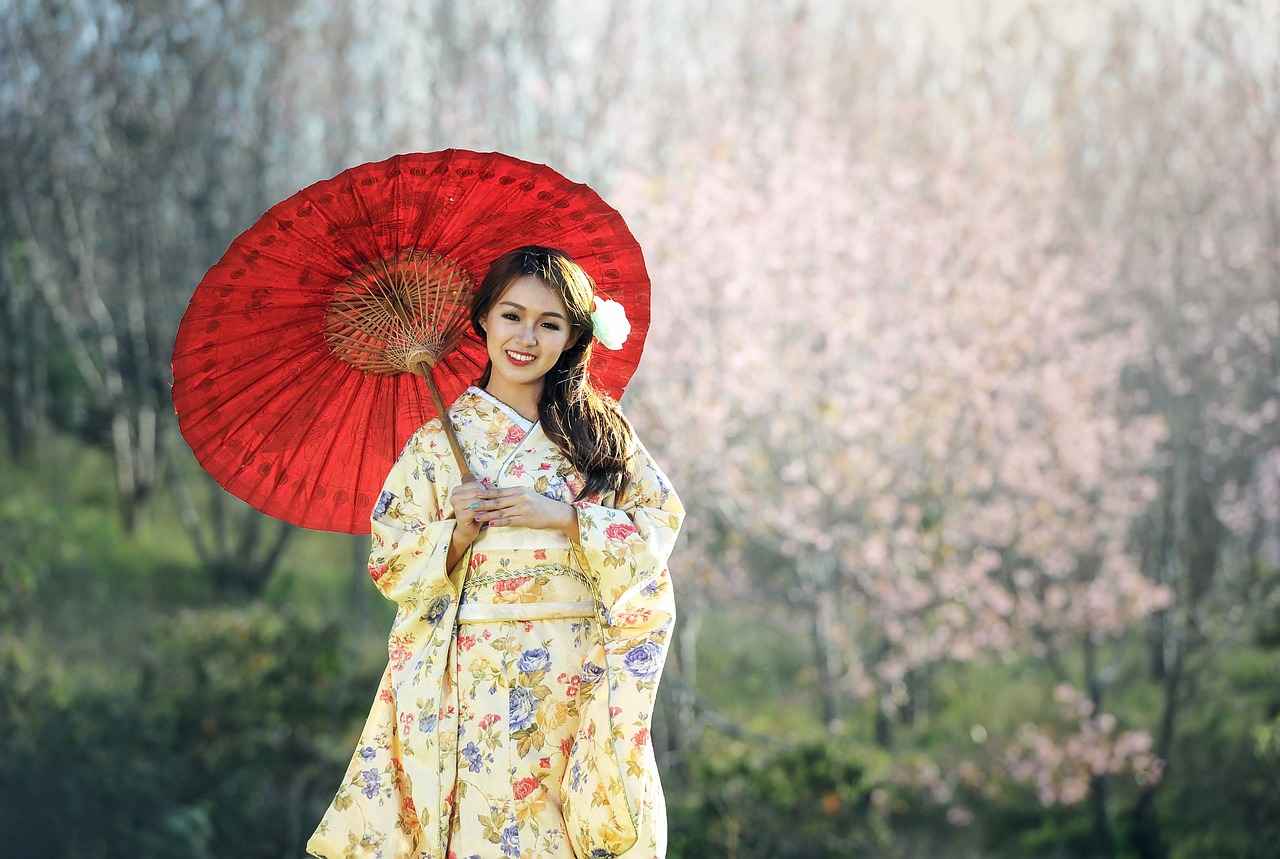
9. Styling Kimonos for Various Occasions
Winter kimonos are not just a fashion statement; they are versatile garments that can be styled for a variety of occasions. Whether you’re heading out for a casual day with friends or attending a formal event, knowing how to style your kimono can elevate your outfit and keep you warm during the colder months. Below, we explore different styling options for winter kimonos, ensuring you can adapt your look to any situation.
- Casual Day Out: For a relaxed yet stylish look, consider pairing your kimono with a simple turtleneck and high-waisted jeans. This combination not only keeps you warm but also creates a chic silhouette. Add ankle boots or trendy sneakers for a comfortable finish.
- Brunch with Friends: To achieve a laid-back brunch outfit, layer your kimono over a fitted dress. This adds a touch of elegance while remaining cozy. Accessorize with a wide-brimmed hat and a crossbody bag for a fashionable touch.
- Office Wear: Transform your kimono into a professional outfit by wearing it over a tailored blouse and smart trousers. Opt for a structured kimono in neutral tones to maintain a polished appearance. Complete the look with loafers or low-heeled boots.
- Formal Events: For more sophisticated occasions, choose a kimono made from luxurious fabrics like silk or velvet. Pair it with a fitted dress or tailored pants. Consider adding statement jewelry and elegant heels to enhance the overall look.
- Evening Out: When heading out for dinner or a night on the town, style your kimono with a sleek black top and leather leggings. This edgy combination creates a striking contrast and is perfect for evening attire. A clutch and bold makeup can complete the ensemble.
By understanding how to style your winter kimono for various occasions, you can ensure that this versatile piece remains a staple in your wardrobe. From casual outings to formal events, the right accessories and layering techniques will allow you to express your unique style while staying warm and comfortable.
9.1. Casual Day Out
When it comes to achieving a casual yet fashionable look, kimonos are a versatile addition to any wardrobe. One of the best ways to style a kimono for a relaxed day out is by pairing it with jeans and a simple tee. This combination not only exudes a laid-back vibe but also allows for creativity and personal expression.
To start, choose a lightweight kimono in a fun print or a solid color that complements your personal style. A floral or geometric pattern can add a touch of playfulness to your outfit. For the base layer, opt for a basic white or black tee that serves as a timeless staple. This combination keeps the overall look simple yet chic.
Next, select a pair of well-fitted jeans. High-waisted jeans are particularly trendy and can create a flattering silhouette. Distressed denim can add an edgy feel, while classic blue or black jeans maintain a polished appearance. The choice of denim can significantly influence the overall vibe of your outfit.
Accessorizing is key to elevating your casual look. Consider adding a statement necklace or a pair of bold earrings to draw attention to your face. A stylish crossbody bag not only adds functionality but also enhances the outfit’s aesthetic. Footwear is equally important; opt for comfortable yet stylish options like ankle boots or trendy sneakers to complete your ensemble.
Finally, don’t forget to layer with a light scarf or a pair of sunglasses if you’re heading out during the day. This not only adds another layer of style but also provides practical benefits against changing weather conditions.
In summary, pairing a kimono with jeans and a simple tee creates a versatile and stylish outfit perfect for casual outings. With the right accessories and attention to detail, you can effortlessly achieve a look that is both comfortable and fashionable.
9.2. Formal Events
When it comes to attending formal events, your kimono can be transformed into a stunning centerpiece of your outfit. By incorporating elegant accessories and pairing it with tailored trousers, you can achieve a sophisticated look that is not only stylish but also appropriate for various formal gatherings.
To start, consider selecting a kimono made from luxurious fabrics such as silk or brocade. These materials not only enhance the overall aesthetic but also add a touch of opulence to your ensemble. When choosing your tailored trousers, opt for a slim fit that complements the flowing silhouette of the kimono. This combination creates a balanced look that flatters your figure.
Next, accessorizing plays a crucial role in elevating your kimono outfit. Statement jewelry, such as a bold necklace or elegant earrings, can draw attention and add a personal touch. If you prefer a more understated approach, a delicate bracelet or a pair of classic studs can work wonders. Additionally, a chic belt can define your waist and add structure to your look, especially when worn over the kimono.
Footwear is another essential element. Choose elegant heels or stylish flats that not only provide comfort but also enhance your overall look. Consider selecting shoes that match or complement the colors of your kimono and trousers for a cohesive appearance.
Finally, don’t forget to include a sophisticated handbag or clutch that aligns with the formality of the event. A well-chosen bag can serve as both a functional accessory and a style statement, completing your polished look.
By thoughtfully combining your kimono with tailored trousers and elegant accessories, you can create a striking outfit that is perfect for any formal occasion, allowing you to embrace both tradition and modern fashion.

10. Cultural Significance of Kimonos
Understanding the cultural background of kimonos is essential for anyone looking to appreciate this traditional garment fully. Kimonos are not merely clothing; they are a symbol of Japanese heritage, embodying centuries of history, artistry, and cultural significance. Each kimono tells a story, often reflecting the wearer’s status, occasion, and even personality.
The origins of the kimono date back to the Heian period (794-1185), where it was characterized by its straight seams and wrap-around design. Over the years, the garment evolved, incorporating various fabrics, patterns, and colors that signify different meanings. For example, bright colors and intricate patterns are often reserved for celebratory occasions, while more subdued tones are typically worn during mourning.
In modern times, kimonos have transcended their traditional roles, adapting to contemporary fashion while retaining their cultural essence. This evolution showcases how kimonos can be both timeless and trendy, appealing to a new generation of fashion enthusiasts. Designers worldwide are now incorporating kimono-inspired elements into their collections, blending traditional aesthetics with modern sensibilities.
Moreover, understanding the cultural significance of kimonos can enhance your appreciation of their beauty and craftsmanship. From the choice of fabric to the way a kimono is worn, every detail is intentional and steeped in meaning. For instance, the obi (sash) tied around the waist can signify different meanings based on how it is styled, indicating the wearer’s social status or marital status.
In conclusion, recognizing the rich cultural heritage behind kimonos not only deepens your appreciation for this exquisite garment but also highlights the importance of preserving traditional crafts in a rapidly changing world. Whether you are wearing a kimono for a special occasion or simply admiring its artistry, understanding its cultural background adds a profound layer of meaning to the experience.
10.1. Historical Context
Kimonos are not just garments; they are a profound representation of Japanese culture that dates back centuries. Their significance extends beyond mere fashion, embodying a rich tapestry of tradition, status, and identity. Understanding the historical context of kimonos allows us to appreciate their evolution and continued relevance in contemporary fashion.
The origins of the kimono can be traced back to the Heian period (794-1185), where it was primarily worn by the aristocracy. Initially, kimonos were simple in design and color, but as time progressed, they became more elaborate, with intricate patterns and vibrant colors that signified the wearer’s social standing. The Nara and Heian periods saw the introduction of the yukata, a lighter cotton kimono worn during the summer months, further diversifying the kimono’s role in Japanese life.
During the Edo period (1603-1868), the kimono evolved into a symbol of cultural identity. Different regions developed unique styles and patterns, often inspired by nature, seasons, and folklore. This era also marked the rise of the geisha, who wore exquisitely designed kimonos that showcased their artistry and skill. The color and fabric choices became increasingly significant, as they communicated messages about the wearer’s personality and social status.
In the modern era, kimonos have undergone a transformation, blending traditional aesthetics with contemporary fashion trends. Designers have embraced the kimono’s versatility, creating pieces that appeal to a global audience while honoring their cultural roots. Today, kimonos are worn not only in Japan but worldwide, often as a fashion statement that symbolizes a connection to heritage and tradition.
In conclusion, kimonos hold a rich historical significance that continues to influence modern fashion. Their evolution reflects the changing dynamics of society and culture, making them a timeless and cherished garment.
10.2. Modern Interpretations
Modern Interpretations of Kimonos have become a fascinating blend of tradition and contemporary fashion, showcasing the versatility of this iconic garment. Today, kimonos are not just reserved for special occasions; they have been reimagined to fit various lifestyles and personal styles, making them a staple in modern wardrobes.
In recent years, designers have embraced the cultural heritage of kimonos while infusing them with modern aesthetics, resulting in an array of styles that appeal to a global audience. This transformation reflects a growing appreciation for the rich history of kimonos and their ability to adapt to current fashion trends.
- Street Style: Kimonos are often seen in urban settings, paired with casual outfits such as jeans and graphic tees. This combination creates a relaxed yet chic look that resonates with younger generations.
- High Fashion: Many high-end designers have incorporated kimonos into their collections, using luxurious fabrics and intricate designs to elevate the traditional garment into runway-ready pieces.
- Everyday Wear: Lightweight kimonos made from breathable materials are perfect for layering, making them ideal for everyday wear in various climates.
Additionally, the use of vibrant colors and bold patterns has become a hallmark of modern kimono designs. Many contemporary kimonos feature floral prints, geometric designs, and even abstract art, appealing to diverse tastes and preferences.
As kimonos continue to evolve, they serve as a reminder of the importance of cultural appreciation and the ability to blend heritage with modernity. Whether it’s through casual wear or high fashion, the modern interpretation of kimonos allows individuals to express their unique style while honoring a timeless tradition.

11. DIY Winter Kimono Ideas
For those with a creative spirit, crafting your own winter kimono can be a fulfilling and enjoyable project. Not only does it allow for personalized touches, but it also results in a unique design that reflects your individual style. Here are some ideas and tips to get you started on your DIY winter kimono journey.
- Choosing Your Materials: The first step in creating your winter kimono is selecting the right fabric. Opt for materials that offer warmth and comfort. Wool, flannel, and heavy cotton blends are excellent choices that provide both insulation and style.
- Design Your Pattern: Before cutting your fabric, sketch out a design. Consider the length, sleeve style, and any embellishments you’d like to include. A simple rectangular cut can create a flowing kimono, while adding a belt can enhance the silhouette.
- Basic Sewing Techniques: If you’re new to sewing, start with basic stitches. Use a sewing machine for straight seams and consider hand-stitching for delicate areas. Hemming the edges will give your kimono a polished finish.
- Adding Personal Touches: Incorporate unique elements like pockets, embroidery, or even fabric paint to make your kimono truly one-of-a-kind. Experiment with different colors and patterns to create a look that stands out.
- Layering for Style: Once your kimono is complete, think about how to style it. Pair it with turtlenecks, skinny jeans, or even a long dress for a chic look. Accessories like a wide-brimmed hat or statement jewelry can elevate your outfit.
Creating your own winter kimono not only provides a sense of accomplishment but also allows you to express your personal style during the colder months. Embrace your creativity and enjoy the process of making something uniquely yours!
11.1. Choosing Materials
Choosing the right materials for your DIY winter kimono project is essential for ensuring both warmth and style. When embarking on this creative endeavor, you should consider various fabric options that not only align with your personal aesthetic but also provide the necessary insulation for colder weather.
Start by exploring wool, a classic choice known for its exceptional warmth and breathability. Wool kimonos are perfect for the winter months, as they naturally wick moisture away from the body while keeping you snug. Additionally, they come in various textures and patterns, allowing for a range of stylish options.
Another excellent option is cotton blends. These fabrics combine the softness of cotton with the durability of synthetic fibers, creating a lightweight yet warm garment. Cotton blends are particularly versatile, making them suitable for both casual and formal occasions.
Synthetic fabrics have also gained popularity in recent years. Materials like polyester and nylon offer durability and lightweight warmth, making them ideal for those looking for easy-care options. These fabrics often come in vibrant colors and patterns, allowing for a more modern take on the traditional kimono design.
When selecting materials, it’s crucial to consider not only the warmth but also the texture and drape of the fabric. Soft, flowing materials will enhance the overall aesthetic of your kimono, while structured fabrics can provide a more tailored look. Don’t hesitate to mix and match fabrics to create a unique piece that reflects your personal style.
In summary, the fabric you choose can significantly impact the functionality and style of your winter kimono. By considering options like wool, cotton blends, and synthetic materials, you can create a garment that is not only warm but also a true reflection of your fashion sense.
11.2. Simple Sewing Techniques
Creating a custom winter kimono is an exciting project that allows you to express your unique style while ensuring a perfect fit. Here are some basic sewing techniques to help you get started on your journey to crafting your own winter kimono:
- Choosing Your Pattern: Start by selecting a pattern that aligns with your vision. There are many free and paid patterns available online tailored for beginners. Look for a design that is simple yet stylish.
- Fabric Preparation: Before you start sewing, wash and iron your fabric to pre-shrink it. This step is crucial to avoid any surprises after your kimono is completed.
- Cutting Fabric: Use sharp fabric scissors to cut your pieces accurately according to the pattern. Lay the fabric flat and ensure you follow the grain line for the best results.
- Basic Stitching: Familiarize yourself with basic stitches like straight stitch, zigzag stitch, and hem stitch. A sewing machine can make this process faster, but hand sewing is also effective for smaller areas.
- Creating Seams: When sewing the pieces together, ensure you pin them securely before stitching. This helps maintain alignment and prevents fabric from shifting.
- Finishing Edges: To prevent fraying, finish the edges of your seams with a zigzag stitch or a serger if you have one. This will enhance the durability of your kimono.
- Adding Details: Consider embellishing your kimono with pockets, belts, or decorative stitches. These details can enhance the overall aesthetic and functionality of your garment.
- Fitting Adjustments: Try on your kimono as you go to make necessary adjustments. This ensures a comfortable fit and allows you to make changes before finalizing your sewing.
By mastering these simple sewing techniques, you can create a winter kimono that not only keeps you warm but also showcases your personal flair. Enjoy the process and let your creativity shine!
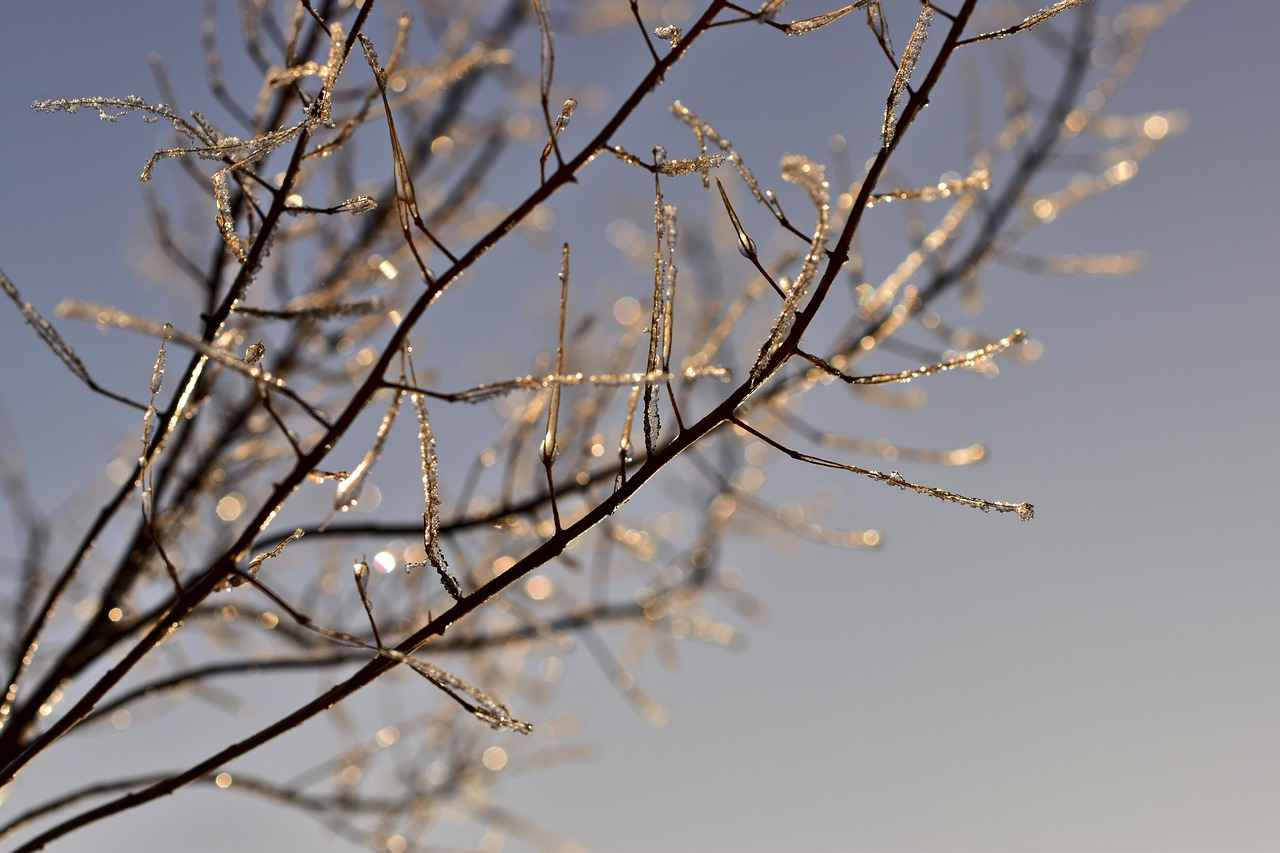
12. Conclusion: Embrace Winter Fashion with Kimonos
Winter kimonos are not just a fashion statement; they are a perfect fusion of style and functionality. As the colder months approach, these garments become essential for those looking to maintain their fashion sense while staying warm. The beauty of winter kimonos lies in their versatility, allowing you to layer them with various outfits, making them suitable for both casual and formal occasions.
Incorporating a winter kimono into your wardrobe can elevate your overall look. When choosing a winter kimono, consider the fabric. Options such as wool, cotton blends, and synthetic fibers provide warmth without compromising on style. Wool kimonos, for instance, are renowned for their excellent insulation properties, making them ideal for colder climates. They can be paired with fitted turtlenecks and tailored pants for a chic, layered appearance.
Layering is crucial during winter, and mastering this technique can significantly enhance your style. Start with a fitted base layer, such as a thermal top, to create a sleek silhouette. Adding outerwear like jackets over your kimono can provide an extra layer of warmth while enhancing your outfit’s aesthetic.
Accessorizing is another way to make your winter kimono stand out. A cozy scarf or shawl not only adds warmth but also introduces a splash of color to your ensemble. When it comes to footwear, opt for stylish boots or sneakers that offer both comfort and warmth.
As you explore the various styles of winter kimonos, you will find options ranging from oversized fits to tailored designs. Earthy tones and bold colors are trending this winter, allowing you to express your personal style while staying in tune with seasonal color palettes.
In conclusion, winter kimonos are a must-have for anyone looking to maintain their fashion sense during the chilly months. With the right fabric, layering techniques, and accessories, you can create stunning outfits that keep you warm and stylish. Embrace the versatility of winter kimonos and let them be a key piece in your winter wardrobe.
Frequently Asked Questions
- What materials are best for winter kimonos?
When it comes to winter kimonos, wool and synthetic fabrics are top choices. Wool offers excellent insulation and breathability, while synthetic materials provide lightweight warmth and durability, making them perfect for layering.
- How do I style a winter kimono for a casual look?
For a laid-back vibe, pair your winter kimono with jeans and a simple tee. This combination keeps you cozy while looking effortlessly stylish. Don’t forget to accessorize with a cute scarf!
- Can I wear a winter kimono to formal events?
Absolutely! To elevate your winter kimono for formal occasions, wear it with tailored trousers and elegant accessories. This creates a sophisticated look that’s sure to impress.
- What are some popular color trends for winter kimonos?
Earthy tones like browns and greens are in vogue, providing a warm palette for winter. If you want to make a statement, bold colors like deep reds and royal blues can add a vibrant touch to your outfit.
- How should I care for my winter kimono?
To keep your winter kimono looking its best, follow the washing instructions specific to the fabric. For storage, consider hanging it to prevent wrinkles and maintain its shape during the off-season.






